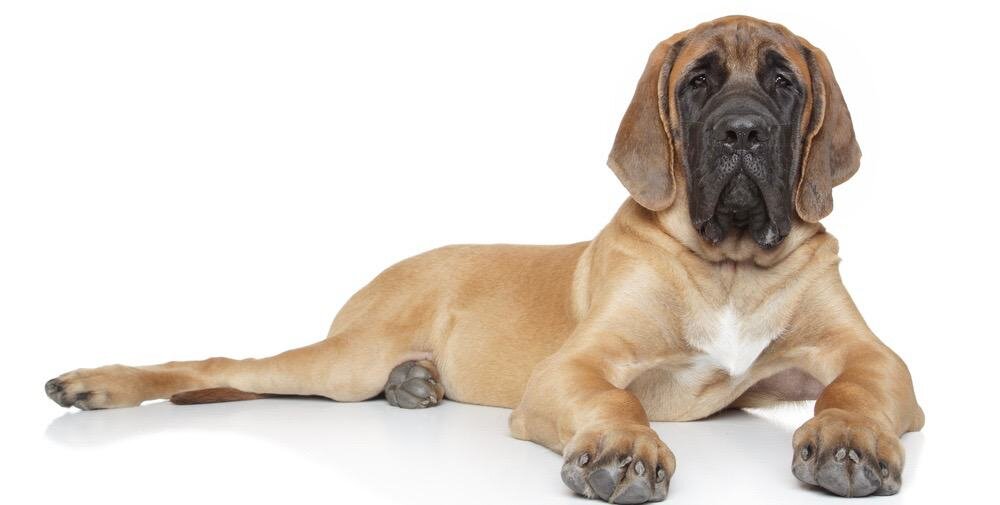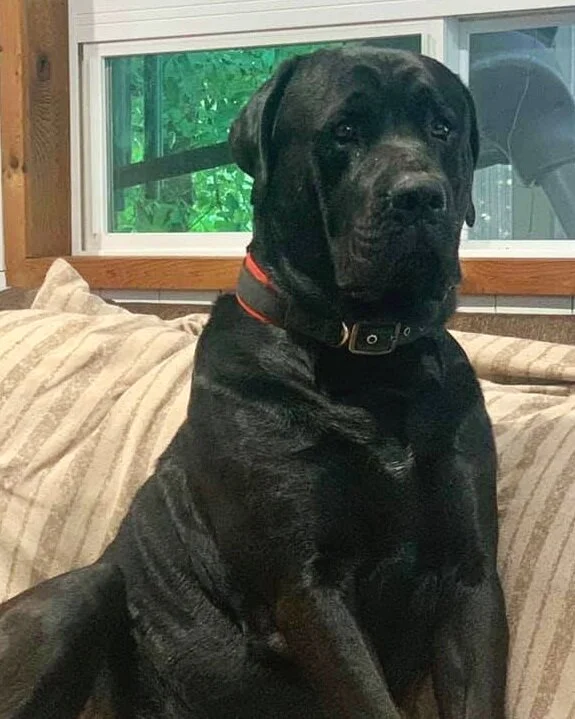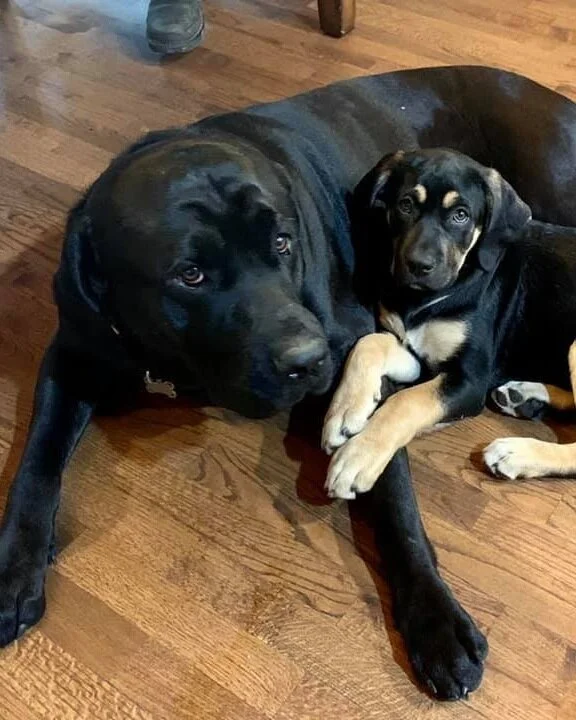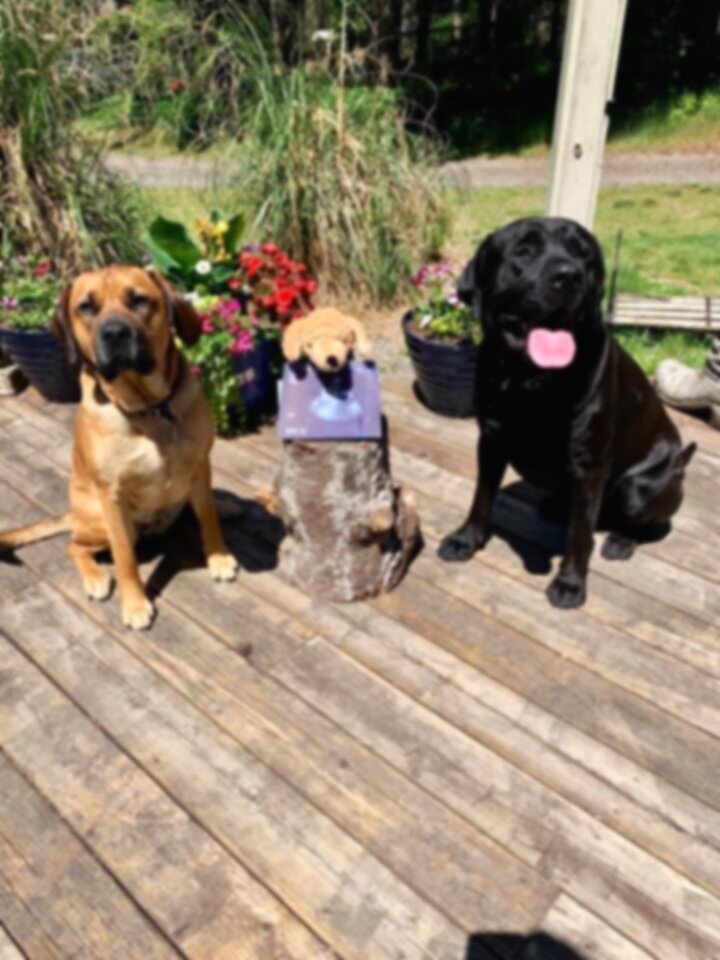
Meet the Mastador
The Mastador is the hybrid (or cross-breed) of the English Mastiff and the Labrador Retriever, bred specifically for its family-friendly nature.
The Evolution of the Mastador
The Labrador
Labrador Retrievers have an enduring reputation for gentle temperment, ease of handling and training, high intelligence and loyalty. They are truly the perfect family pet.
The English Mastiff
English Mastiffs are a wonderful, stately breed that combines large size and strength with strong loyalty, gentleness and affection, all wrapped up in a beautiful, calm demeanor. They love close physical companionship, and want to be touching you, always staying close.
The History of the Mastador
Mastador breeders only use the English Mastiff as the foundation for the Mastador, as opposed to other Mastiff breeds such as Cane Corso, Neopolitan, Bullmastiff, Bordeaux, Boerboels, or any other variation. This is because the English Mastiff has the proven temperament of a Mastiff that is less aggressive and more companion-oriented than other Mastiff breeds.
The Mastador as a hybrid has been around for many decades, though it has only been in the last decade that professional, responsible breeding programs have emerged to reproduce them. The star of the 1957 Disney movie "Old Yeller" was said to be a Mastador. He was rescued from a shelter in Los Angeles by a Hollywood dog trainer and appeared in several other movies as well. The goal of professional Mastador breeders is to stabilize the breed in terms of temperament, size, and other traits.
The Mastador is only in its third generation of responsible breeding. There are first, second, and third-generation Mastadors to be found out there, and several variations based on "back-crossing". This is the process of breeding a Mastador back to one of the foundation breeds, which results in a percentage of Mastiff/Lab mix that is other than 50/50. This is done to bring out certain traits, such as color or size. You may find breeders that insist that the only true Mastador is 50/50 English Mastiff/Labrador, but this is not true. The practice of back-crossing is a normal part of hybrid-breeding (especially in the early generations of development) and the results of those backcrosses are just as much "Mastador" as any 50/50 mix.
Unique Characteristics
Size
First generation (F1) Mastadors tend to be the largest, with males often in the 130-140 lb. range, and sometimes as big as 170 lbs. F1B Mastadors, where the dominant breed is the English Mastiff (75%) also tend to that larger size. Females can be as small as 75 lbs, or as large as 130 lbs., depending on the size of the parents.
In any litter of Mastadors, you can find pups that favor one side of their genetics over another.
Color
F1 Mastadors (Mastiff x Lab) turn out black nearly 90% of the time. This is because most color genes are recessive, and require the color to exist in both parents in order to show up in offspring. The result is that most F1 Mastadors revert to Lab-dominant black color. There are exceptions, however, which cannot be readily explained by color genetics.
Chocolate and yellow Mastadors will appear when the chocolate or the yellow (both recessive genes) show up on both Lab sides of both parents. But if one parent carries Lab yellow, and one parent carries Lab chocolate, they will cancel each other out and produce black. However, most F2 (2nd generation) Mastadors will produce the common Mastiff colors of fawn (light yellow or off-white) and apricot (various shades of red).
When breeding in the 2nd and third generations, you may find a wide variety of colors, some which are Lab colors, and some which are Mastiff colors. Chocolate, yellow and black are all Mastador colors, as well as various shades of fawn (off-white/cream), apricot (red), along with brindles (stripes) some that have dark stripes with apricot, and some that have dark stripes with fawn, and also reverse brindle, in which the dominant color is either apricot or fawn, and the secondary color is the dark sable/brown. We have also seen black & tan in many litters, and black pups that have brindle sox or even their whole legs.
Most Mastadors of color have black masks, but not all. Many that favor the Lab colors do not have the black mask. There is a look and a color for everybody in Mastadors!
Tempermant
English Mastiffs are a guardian breed, and therefore Mastadors are as well. It is very important (especially during the first 18 months life) that they are well-socialized with people and animals outside of your own household. Failure to do that could result in overly-protective behaviors starting to show up between 10-18 months of age (essentially puberty). This is more common in males than females, but can show up in both. This is correctable with professional training, but as the old saying goes, "an ounce of prevention is worth a pound of cure".
As both breeds are known to be diggers and chewers, there is a strong likelihood that you will need to train that behavior out of your puppy in the early going. Some pups are worse than others. Sometimes it is just cute. Sometimes, it can be expensive and destructive if not trained away early in life.
Aggression: If you see first signs of aggressive behavior, do not wait, hoping that it will disappear! It likely will not, until you deal with it.
There are three methods of behavioral modification that we have found to be generally effective at the early signs of aggression.
1. Get a spray bottle with an adjustable nozzle and fill it with water. When your dog starts to show a sign they will act out, spray the water directly in their face with a medium spray (not a stream), along with your stern verbal correction. Keep the bottle handy and be consistent to use it *every* time your dog shows signs of acting aggressively. After a short time, he will likely stop right away when he hears your verbal command, and sees you reach for the bottle. This method will work for most other unwanted behaviors as well.
2. If the above does not deter your dog, use a 3:1 ratio of water to distilled white vinegar. It will be an astringent to the eyes, but it is totally harmless. It will sting, and it will get his attention.
3. If the spray bottle techniques don't work, you may need to try an electronic collar. These have a wide range of training modes, from various levels of sound, to various level of electronic "buzz". There are several brands, and all of them offer training videos online. In fact, there are many training videos for e-collar training, that are not associated with any product, but were produced by professional trainers.
If you continue to need assistance with this problem, we will offer referrals to trainers experienced with aggression issues.
Health & Lifespan
Health and lifespan have a number of contributing factors, other than the genetic predispositions of the foundation breeds. Just like in the case of people, quality of diet and healthcare are major factors. Let me start out by saying that if you do everything right in that regard, there is no reason why your Mastador should not live 13+ years. Obviously, things show up, just like they do in us, that cannot be predicted, but as a general rule this should be true.
This lifespan is dependant on two major factors. The first is diet. You must feed your dog a diet that is free of corn, wheat and soy, as the three biggest culprits. Raw feeding is by far the best alternative, but can be expensive and time-consuming to prepare. Raw food can be obtained on-line and shipped to your door.
The second important factor is that you should never get your dog spayed or neutered before they reach full maturity. For Mastadors, this is on average 24 months. The sex hormones are responsible for bone density and sound joint development, and robbing your pup of that before his or her growth plates close dramatically increases the risk of early hip dysplasia, joint failures, and three different types of cancer.
Generations Explained
F1: First Generation. English Mastiff bred to Labrador Retriever.
F1B: First Generation Mastador bred to either of the foundation breeds:
Mastador bred to Lab = 75% Lab, 25% Mastiff puppies.
Mastador bred to Mastiff = 75% Mastiff, 25% Lab puppies.
F2: Second Generation. First Generation Mastador bred to First Generation Mastador.
F2B: Second Generation. Second Generation Mastador bred to either of the foundation breeds (75% of whichever is the foundation breed).
F3: Third Generation. F2 Mastador bred to F2 Mastador
Third Generation: (no "F" designation) Second Generation Mastador bred to either first- or second-generation Mastador.
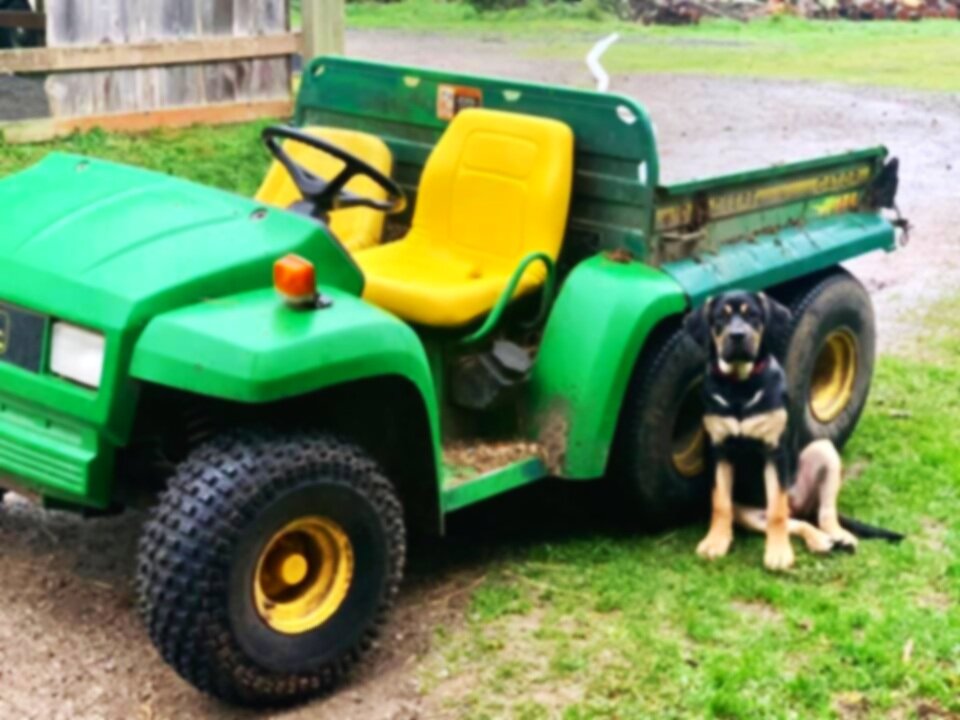
Meet the McCullough Mastadors
Get to know our dogs - Kane, Klarabelle, and Zena!

